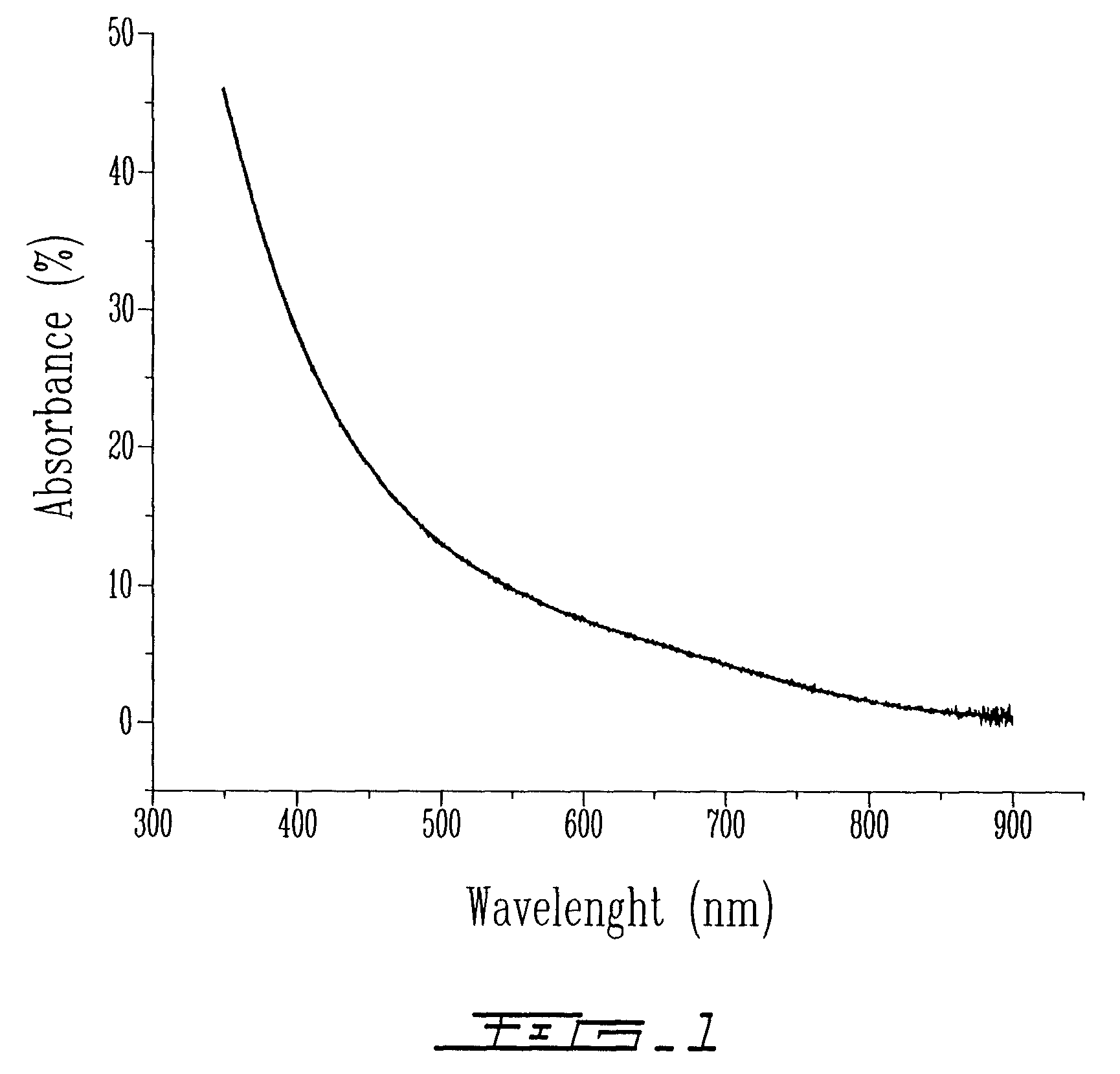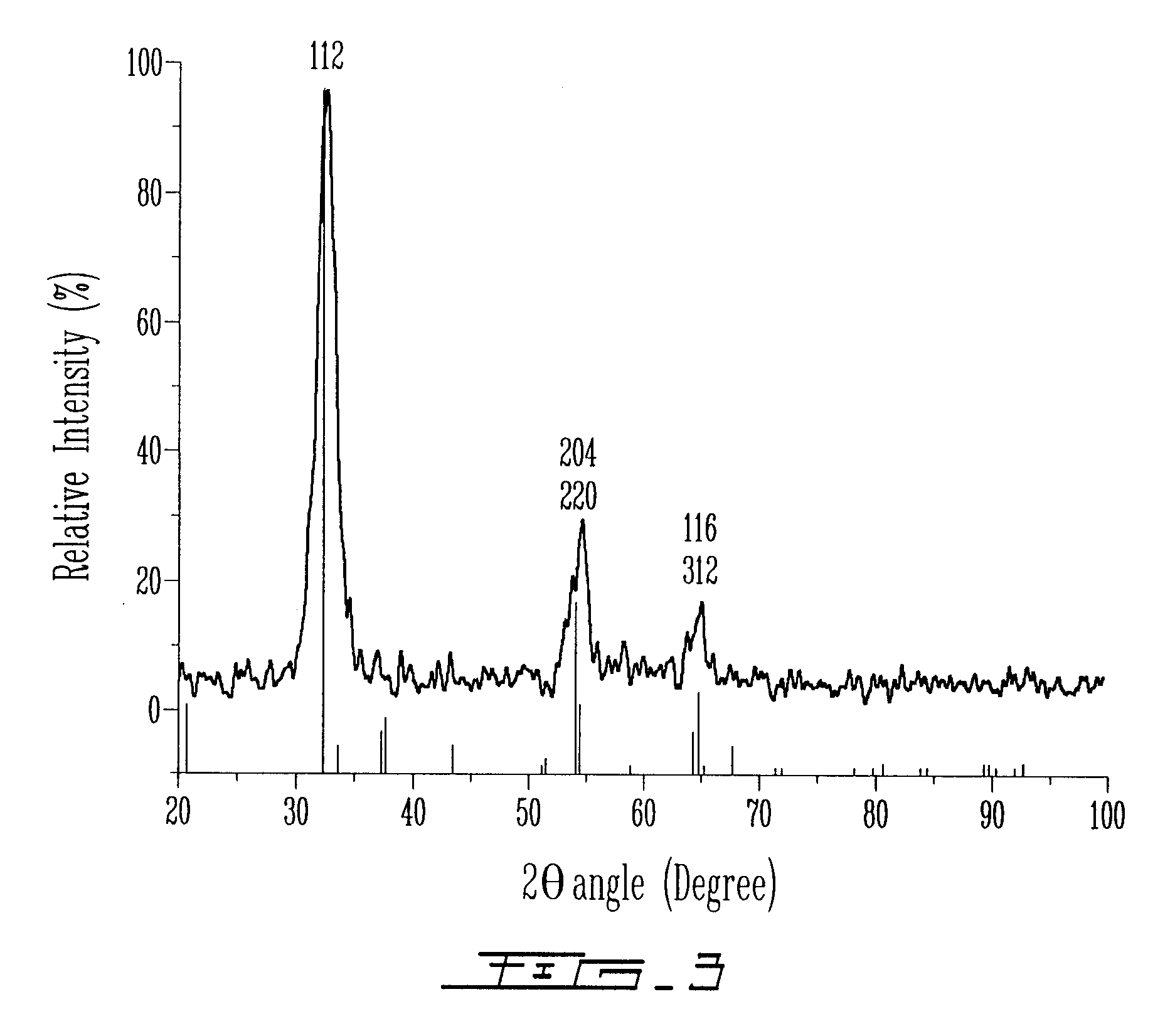Processes for Preparing Chalcopyrite-Type Compounds and Other Inorganic Compounds
a technology of chalcopyrite and inorganic compounds, which is applied in the field of preparation of chalcopyrite-type compounds and other inorganic compounds, can solve the problems of high cost and labor intensity of processes, steps carried out under toxic conditions, and process steps often required costly reagents, so as to achieve easy preparation of compounds of families iii-v or ii-vi, and low cost
- Summary
- Abstract
- Description
- Claims
- Application Information
AI Technical Summary
Benefits of technology
Problems solved by technology
Method used
Image
Examples
example 1
Synthesis of CuInS2
[0178]InCl3 (165.9 mg, 0.75 mmol) was dissolved in 17 mL of anhydrous N-methylimidazole (NMI) in a 250 mL two-neck flask under argon at room temperature. Lithium sulfide (137.8 mg, 1.5 mmol) was suspended in 15 mL NMI at room temperature. Both compositions or solutions were mixed together and after one hour of ultrasonic bath treatment, a transparent yellowish solution (solution A) was obtained.
[0179]In a separate 250 mL two-neck flask, CuCl (74.2 mg, 0.75 mmol) was dissolved in 9 mL NMI under argon (solution B).
[0180]After both solutions A and B were cooled to 5° C., solution B was added dropwise over 15 minutes to solution A under argon. The resulting dark orange suspension was stable against aggregation. The mixture was stirred during 12 hours at 5° C. Then, the particles were centrifuged, filtered and dried at room temperature under vacuum overnight. The CuInS2 particles can eventually be annealed.
[0181]The sample obtained in Example 1 was analyzed by UV-visi...
example 2
Synthesis of AgInS2
[0186]InCl3 (165.9 mg, 0.75 mmol) was dissolved in 17 mL anhydrous N-methylimidazole (NMI) in a 250 mL two-neck flask under argon at room temperature. Lithium sulfide (137.8 mg, 1.5 mmol) was suspended in 15 mL NMI at room temperature. Both solutions were mixed together and after one hour in an ultrasonic bath, a transparent yellowish solution (solution A) was obtained.
[0187]In a separate 250 mL two-neck flask, AgCN (100.4 mg, 0.75 mmol) was dissolved in 9 mL NMI under argon (solution B).
[0188]Then, solution B was added dropwise over 15 minutes to solution A under argon at 25° C. The resulting dark orange suspension was stable against aggregation. The mixture was heated during 1 hour at 80° C. Then, the particles were centrifuged, filtered and dried at room temperature under vacuum overnight. The sample obtained in Example 2 was then analyzed by UV-visible spectroscopy (FIG. 11). The UV-visible spectrum was obtained from particles of the sample suspended in aceto...
example 3
Preparation of Thin Film Layer High Performance Electrodes
[0192]In order to prepare thin film layer high performance electrodes using the compounds obtained by the process of the present invention, a polymeric binder and conductivity enhancer are used. The binder and the conductivity enhancer are mixed together with an organic solvent and a chalcopyrite-type compound so to obtain a suspension. Then, the suspension is coated on a substrate (used as a current collector) using a blade applicator and then dried under vacuum at 50° C. during 12 hours.
[0193]An example of a composition for such a suspension can be 95% wt chalcopyrite-type compound such as CuInS2, 3% wt polyvinylidene fluoride (PVDF) and / or poly(vinylidene fluoride-co-hexafluoropropylene) (PVDF-HFP) as binder, 2% carbon black powder as conductivity enhancer and N-methylpyridinone (NMP) as solvent.
PUM
| Property | Measurement | Unit |
|---|---|---|
| temperature | aaaaa | aaaaa |
| temperature | aaaaa | aaaaa |
| temperature | aaaaa | aaaaa |
Abstract
Description
Claims
Application Information
 Login to View More
Login to View More - R&D
- Intellectual Property
- Life Sciences
- Materials
- Tech Scout
- Unparalleled Data Quality
- Higher Quality Content
- 60% Fewer Hallucinations
Browse by: Latest US Patents, China's latest patents, Technical Efficacy Thesaurus, Application Domain, Technology Topic, Popular Technical Reports.
© 2025 PatSnap. All rights reserved.Legal|Privacy policy|Modern Slavery Act Transparency Statement|Sitemap|About US| Contact US: help@patsnap.com



